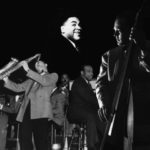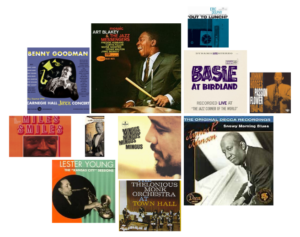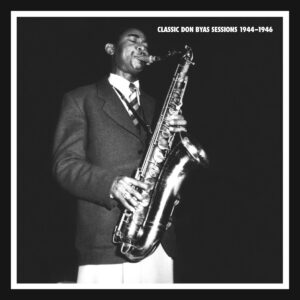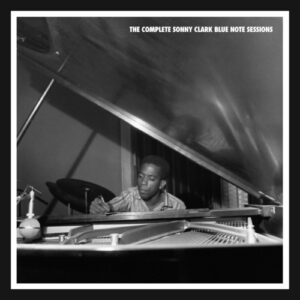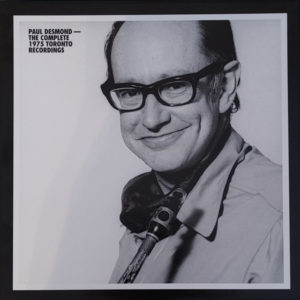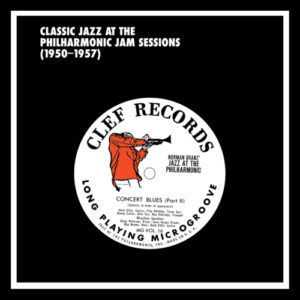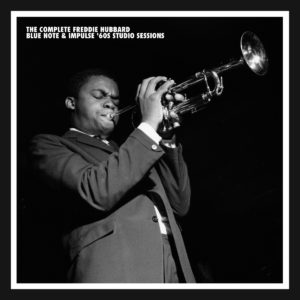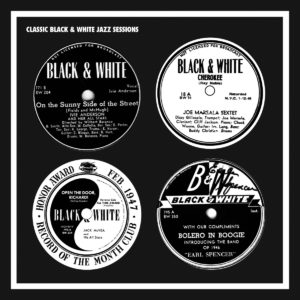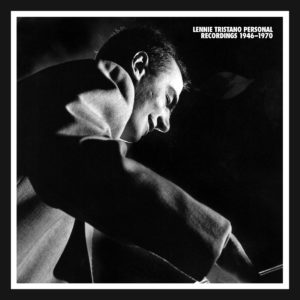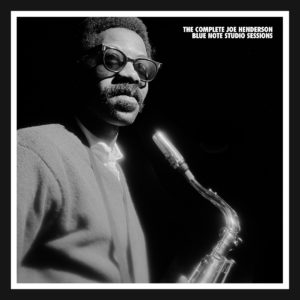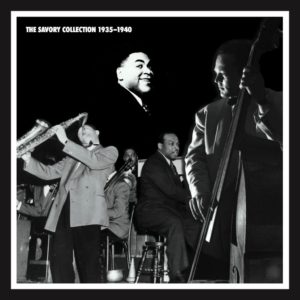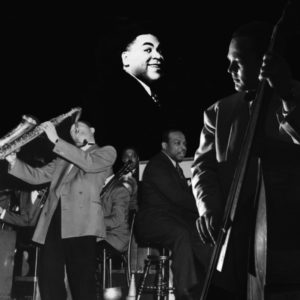Bix Beiderbecke
"In the end, it’s right and proper to ask: what is it about all these records from Bix Beiderbecke, some of them more then seventy years old, that continues to tickle the imaginations, and affections, of new generations of listeners?" - Richard M. Sudhalter
At the very dawn of jazz recording, with echoes of the Original Dixieland Jazz Band still in the air, very few musicians were able to capture a fresh new sound until the flood gates opened with the blossoming of Louis Armstrong. Naturally, there were exceptions like Sidney Bechet or Earl Hines, but, for the most part, it was the powerful virtuosic display of Louis Armstrong that made the Roaring 20s the era of “hot jazz”. It wasn’t long, however, before two highly individual talents emerged and unknowingly began a stylistic movement of their own.
On February 18, 1924, less than a year after Armstrong cut his first records, a young cornetist from Davenport, Iowa named Bix Beiderbecke made his recording debut. By the late twenties he had ushered in a striking new approach to the jazz solo concept by making it cool.
Bix Beiderbecke’s improvisations were more relaxed, melodic, and graced with inspirations from impressionistic and modern tonal composers including Ravel, Debussy, Stravinsky and the lesser-known Eastwood Lane. His tone has been likened to that of a bell or a mallet on a chime; Eddie Condon said Bix’s tone was like a girl saying “yes”. His brief and troubled life became legendary and emblematic, inspiring a best-selling novel and a full-length motion picture. What’s important is that Bix Beiderbecke remains one the most musically brilliant figures of any period in jazz. – Alan Goodman
The Complete Wolverines 1924-1928
Jazz Me Blues
In 1924, Bix Beiderbecke made his recording debut on a series of recordings with the Wolverines, starting out when he was not quite 21 with “Fidgety Feet” and “Jazz Me Blues,” taking a notable solo chorus on the latter. All 13 selections by the band with Bix (plus two alternate takes) have been reissued on The Complete Wolverines 1924-1928, topping any previous release in its up-to-date sound quality.
One can hear Bix Beiderbecke’s fast development as a soloist and ensemble player on the Wolverines sides. While Min Leibrook (playing tuba but later becoming known as a bass saxophonist) was the only other musician in the group to gain a strong reputation later on, tenor-saxophonist George Johnson was excellent for the time and the band could compete with the leading jazz groups of 1924.
In Sept. 1924, the Wolverines traveled to New York and made a strong impression. Bix Beiderbecke decided to leave the group to join the prestigious orchestra of Jean Goldkette.
The Complete OKeh and Brunswick Bix Beiderbecke, Frank Trumbauer and Jack Teagarden Sessions: 1924-36 (Mosaic Records)
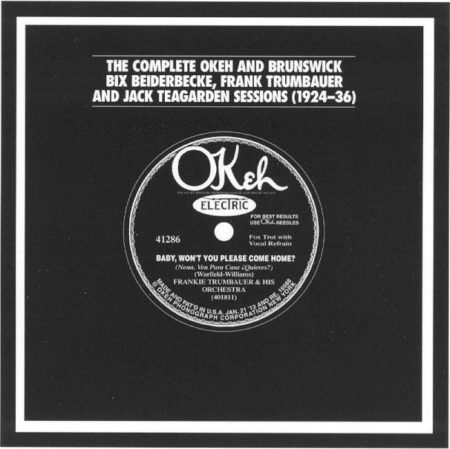
Some of the Most Important Jazz Recordings of the Last Century
The Complete OKeh & Brunswick Bix Beiderbecke, Frank Trumbauer & Jack Teagarden Sessions 1924-1936, centers on these three giants and how their careers intersected during a decade of classic American jazz. It includes some of the rarest and most important jazz recordings of the last century.
A saxophonist, whose horn of choice was a hybrid of alto and tenor called the C-melody sax, Frank Trumbauer displayed a mellow, fluid sound and an extremely laid-back solo conception which became the prime influence on Lester Young who in turn influenced a generation of modern cool tenor saxophonists. Bix Beiderbecke and Tram had admired each other’s playing and recorded together as early as 1924.
Three years later, they began a series of record dates under Trumbauer’s leadership for the OKeh label. These included a seminal rendition of “I’m Coming, Virginia”, the first recorded version of “Riverboat Shuffle”, and the record that everyone seemed to own “Singin’ The Blues”. Bix Beiderbecke, whose talents were not just restricted to the cornet, showed his pianistic and compositional abilities on another OKeh single…his magnificent tone poem “In A Mist”.
DISCOGRAPHY
For the purposes of this discography, only the first issue number of each matrix is listed unless contemporaneous issues exist.
The personnel and instrumentation has been provided by a research group of musicians and scholars, each of whom being an expert on the artists presented here. A symposium was held at The Institute Of Jazz Studies to listen, digest and discern to the best of the group’s ability, the correct personnel and instrumentation of the music presented in this package. Additional information came from the original job sheets and file cards of the ARC*, Brunswick, Columbia and OKeh labels that are located at Sony archives in New York. We are also indebted to the excellent bio-discographies from Phil Evans, who along with Larry Kiner and Bill Trumbauer, produced Tram: The Frank Trumbauer Story (Scarecrow Press); Bix: The Leon Bix Beiderbecke Story (Prelike Press), which was a collaboration between Evans and his wife Linda; the Richard M. Sudhalter and Phil Evans epic Bix: Man & Legend (Arlington House); and Howard J. Waters, Jr. with Jack Teagarden’s Music (W.C. Allen).
The bass sax, used as a substitute for string bass on the majority of these sessions, is listed as part of the rhythm section. On sessions where it is impossible to determine who’s assigned a particular reed instrument, we have listed the entire sax section as (reeds).
78 label abbreviations: Ap for Apex, Ban for Banner, Br for Brunswick, Cam for Cameo, Cl for Clarion, Col for Columbia, Cq for Conqueror, Cr for Crown, Diva for Diva, Dom for Domino, Har for Harmony, Je for Jewel, OK for OKeh, Or for Oriole, Par for Parlophone, PA for Pathe Actuelle, Per for Perfect, Re for Regal, Ro for Romeo and VT for Velvet Tone.
All first issues are American releases unless noted by a (C) for Canada or (E) for England.
The artist credit (that precedes the personnel listing) is taken from the original 78 labels. Trumbauer preferred “Frank” rather than “Frankie”, therefore you will find the artist credit and the personnel listing in conflict. In addition to this, Richard Sudhalter has discovered that for years trumpeter Stirling Bose has had his name misspelled (“Sterling”) in discographies.
*ARC refers to the American Record Corporation, which merged all of the labels above throughout the years 1929-1938. ________________________________________________________________________
THE BIX & TRAM SMALL GROUPS AND TRUMBAUER BIG BAND:
(A) LANIN’S ARKANSAW TRAVELERS: Roy Johnston (tp), Miff Mole (tb), Chuck Miller (cl), Frank Trumbauer (c-melody, as), Rube Bloom (p), Frank DiPrima (bjo), Ward Archer (d).
NYC, May 20, 1924
72553-C Georgia Blues OK 40124
72554-A Lost My Baby Blues –
Note: Discographies list matrix 72554-C as also being issued on OK 40124 but so far no evidence of this take has surfaced. ________________________________________________________________________
(B) FRANKIE TRUMBAUER AND HIS ORCHESTRA WITH BIX AND LANG –1 / FRANKIE TRUMBAUER AND HIS ORCHESTRA WITH BIX –2: Bix Beiderbecke (cor), Bill Rank (tb), Frank Trumbauer (c-melody), Jimmy Dorsey (cl, as), Paul Mertz (p, arr), Howdy Quicksell (bj), Chauncey Morehouse (d).
NYC, February 4, 1927
80391-C Trumbology (PM-arr) –1 OK 40871
80392-A Clarinet Marmalade –2 OK 40772
80393-C Singin’ The Blues –1 –
Note: On matrix 80393 Eddie Lang (g) replaces Quicksell (bj). It has been suggested that Trumbauer plays alto sax throughout and not c-melody. For more information on this subject, consult the text. Discographies incorrectly list Doc Ryker (as) as being present for this session.
In the July 1939 issue of the British magazine Rhythm, Frank Trumbauer stated that Miff Mole had replaced Rank on “Singin’ The Blues”. No other confirmation of this has surfaced.
OK 40772 has the catalog number pressed in the run-off groove area instead of the matrix number. However, on the metal part of “Singin’ The Blues” the matrix number (80393) is located in the run-ON groove area with take-C being shown rather than take-B which is commonly shown in discographies. ________________________________________________________________________
(C) FRANKIE TRUMBAUER AND HIS ORCHESTRA: Bix Beiderbecke (cor, arr), Bill Rank (tb), Frank Trumbauer (c-melody, as), Don Murray (cl, ts), Doc Ryker (as), Irving Riskin (p), Eddie Lang (g), Chauncey Morehouse (d), Bill Challis (arr).
NYC, May 9, 1927
81071-B Ostrich Walk (BB, BC-arr) OK 40822
81072-B Riverboat Shuffle (BC-arr) –
Note: Bill Challis confirmed that both he and Bix were responsible for the arrangement on “Ostrich Walk”. ________________________________________________________________________
(D) FRANKIE TRUMBAUER AND HIS ORCHESTRA: Bix Beiderbecke (cor), Bill Rank (tb), Frank Trumbauer (c-melody), Don Murray (cl, ts, arr), Doc Ryker (as), Irving Riskin (p, arr), Eddie Lang (g), Chauncey Morehouse (d, harpophone).
NYC, May 13, 1927
81083-B I’m Coming, Virginia (IR-arr) OK 40843
81084-B Way Down Yonder In New Orleans (DM-arr) –
Note: The harpophone, a metallophone of the glockenspiel family, is a small, two-and-a-half-octave, unamplified vibraphone that was played in the lap. It was an accessory in drum kits during this period. Pitched an octave lower than the glockenspiel, it was struck with a hard mallet producing a sound similar to a celeste.
TRAM-BIX AND EDDIE (IN THEIR THREE PIECE BAND): Bix Beiderbecke (p, cor), Frank Trumbauer (c-melody), Eddie Lang (g).
Same session
81085-B For No Reason At All In C OK 40871 ________________________________________________________________________
(E) FRANKIE TRUMBAUER AND HIS ORCHESTRA WITH BIX AND LANG: Bix Beiderbecke (cor), Bill Rank (tb), Frank Trumbauer (c-melody, arr), Don Murray (cl, ts), Doc Ryker (as), Irving Riskin (p), Eddie Lang (g), Adrian Rollini (bass sax), Chauncey Morehouse (d, harpophone), Seger Ellis (vcl), Bill Challis (arr).
NYC, August 25, 1927
81273-C Three Blind Mice (BC, FT-arr) OK 40903
81274 Blue River (SE-vcl) (rehearsal-inc.) Sun BXCD 1-3 (CD)
81274-B Blue River (SE-vcl) OK 40879
81275-D There’s A Cradle In Caroline (SE-vcl) – ________________________________________________________________________
(F) BIX BEIDERBECKE: piano solo.
NYC, September 8, 1927
81426-B In A Mist OK 40916
Note: Discographies list September 9, 1927 but the OKeh file card cites the above date. ________________________________________________________________________
(G) TRAM, BIX AND LANG: Bix Beiderbecke (p, cor), Frank Trumbauer (c-melody), Eddie Lang (g).
NYC, September 17, 1927
81450 Wringin’ An’ Twistin’ (rehearsal-inc.) previously unissued
81450-A Wringin’ An’ Twistin’ OK 40916 ________________________________________________________________________
(H) FRANKIE TRUMBAUER AND HIS ORCHESTRA –1 / FRANKIE TRUMBAUER AND HIS ORCHESTRA WITH BIX AND LANG –2 (Adrian Rollini’s Club New Yorkers): Bix Beiderbecke (cor), Bill Rank (tb), Frank Trumbauer (c-melody, dir), Don Murray (cl, ts), Bobby Davis (as), Joe Venuti (vln), Frank Signorelli (p), Eddie Lang (g), Adrian Rollini (bass sax), Chauncey Morehouse (d, harpophone), Fud Livingston (arr).
NYC, September 28, 1927
81488-A Humpty Dumpty (FL-arr) –1 OK 40926
81489-B Krazy Kat (FL-arr) –2 OK 40903
81490-B (The) Baltimore –1 OK 40926 ________________________________________________________________________
(I) BROADWAY BELL HOPS: Bix Beiderbecke (cor), Hymie Farberman (tp), Bill Rank (tb), Don Murray (cl), Bobby Davis (as), Frank Trumbauer (c-melody), Joe Venuti (vln), Frank Signorelli (p), John Cali (bj), Joe Tarto (tu), Vic Berton (d), Irving Kaufman (vcl), Sam Lanin (cym, dir).
NYC, September 29, 1927
144809-2 There Ain’t No Land Like Dixieland To Me (IK-vcl) Diva 2504-D, Har 504-H, VT 1504-V
144810-2 There’s A Cradle In Caroline (IK-vcl) Same issues as 144809
Note: According to Bill Rank, the cymbal crashes are provided by Lanin.
Matrix 144811 (“Rainbow Of Love”), which is from this session, has no jazz content and falls outside the scope of this set. ________________________________________________________________________
(J) BENNY MEROFF AND HIS ORCHESTRA (Adrian Rollini’s Club New Yorkers): Bix Beiderbecke (cor), unknown (tp), Bill Rank (tb), Frank Trumbauer (c-melody, as, dir), Don Murray (cl, ts), Bobby Davis (as), Joe Venuti (vln), Frank Signorelli (p), unknown (bj), Adrian Rollini (bass sax), Chauncey Morehouse (d), Irving Kaufman (vcl).
NYC, September 30, 1927
81499-A Just An Hour Of Love (IK-vcl) OK 40912
81500-A I’m Wonderin’ Who (IK-vcl) –
Note: See the text for an explaination on why Benny Meroff’s name is used here as a pseudonym.
Discographies have listed trumpeter Sylvester Ahola on this date. But after listening to these sides and on the strength of his diary, Ahola denied he took part in this session. Eddie Lang is also listed as being present but, again according to Ahola’s diary, Lang was ill at the time and did not participate in any recording session from September 30–October 20, 1927. ________________________________________________________________________
(K) BIX BEIDERBECKE AND HIS GANG –1 / NEW ORLEANS LUCKY SEVEN –2: Bix Beiderbecke (cor), Bill Rank (tb), Don Murray (cl), Frank Signorelli (p), Adrian Rollini (bass sax), Chauncey Morehouse (d).
NYC, October 5, 1927
81518-B At The Jazz Band Ball –1 OK 40923
81519-B Royal Garden Blues –2 OK 8544
81520-A The Jazz Me Blues –1 OK 40923 ________________________________________________________________________
(L) WILLARD ROBISON AND HIS ORCHESTRA–1 / THE CHICAGO LOOPERS –2: Bix Beiderbecke (cor), Frank Trumbauer (c-melody), Don Murray (cl, ts), Frank Signorelli (p), Eddie Lang or unknown (bj), Vic Berton (d, harpophone), The Deep River Quintet (vcl), Willard Robison (dir).
NYC, October 20-26, 1927
-1 I’m More Than Satisfied (DRQ-vcl) –1 Per 14905
-2 and -5 I’m More Than Satisfied (DRQ-vcl) –1 Per 14905, PA 36724
-3 and -4 I’m More Than Satisfied
(DRQ-vcl) –1 unissued, master no longer exists.
-1 and -4 Clorinda (DRQ-vcl) –2 Per 14910, PA 36729
-2 and -5 Clorinda (DRQ-vcl) –2 Per 14910, PA 36729
-3 Clorinda (DRQ-vcl) –2 unissued, master no longer exists.
-1 and -3 Three Blind Mice –2 Per 14910, PA 36729
-2 Three Blind Mice –2 Per 14910
Note: Both takes of the three titles appeared on Perfect: both takes of “Clorinda” appeared on Pathe. It is not known which take was the initially issued take.
Although the personnel listed was confirmed from the ledgers of Frank Trumbauer, there is still doubt as to who the tenor guitar or muted banjoist is. Discographies have listed Eddie Lang but he did not record with either of these two instruments and the above titles do not reflect his style.
According to Bix: Man & Legend, the matrix numbers for this session were 107854, 107855 and 107856. Unfortunately, the numbers do not appear on the records themselves and since the Pathe-Perfect company destroyed its files when they went bankrupt in the late ‘20s, we are unable to match each matrix with a tune title. The exact recording date is also in question.
To complicate matters further, the take numbers shown in the run-off groove area of the records are not true take numbers. For “I’m More Than Satisfied” – 2 and –5 are the same while –1 is unique. For “Clorinda” –1 and –4 are the same and –2 and –5 are the same. For “Three Blind Mice” –1 and –3 are the same, while –2 is unique. ________________________________________________________________________
(M) NEW ORLEANS LUCKY SEVEN –1 / BIX BEIDERBECKE AND HIS GANG –2: Bix Beiderbecke (cor), Bill Rank (tb), Don Murray (cl), Frank Signorelli (p), Adrian Rollini (bass sax), Chauncey Morehouse (d), Howdy Quicksell (arr).
NYC, October 25, 1927
81568-B Goose Pimples –1 OK 8544
81569-A Sorry (HQ-arr) –2 OK 41001
FRANKIE TRUMBAUER AND HIS ORCHESTRA: Bix Beiderbecke (cor), Bill Rank (tb), Frank Trumbauer (c-melody), Pee Wee Russell (cl, as), Don Murray (cl, ts), Joe Venuti (vln), Frank Signorelli (p), Eddie Lang (g), Adrian Rollini (bass sax), Chauncey Morehouse (d).
Same session
81570-C Crying All Day OK 40966
81571-B A Good Man Is Hard To Find –
BIX BEIDERBECKE AND HIS GANG: Bix Beiderbecke (cor), Bill Rank (tb), Don Murray (cl), Frank Signorelli (p), Adrian Rollini (bass sax), Chauncey Morehouse (d), Howdy Quicksell (arr).
Same session
81572-B Since My Best Gal Turned Me Down (HQ-arr) OK 41001
Note: Quicksell’s arrangement on matrix 81572 is a scaled down version of the one done for the Jean Goldkette band. ________________________________________________________________________
(N) RUSSELL GRAY AND HIS ORCHESTRA: 2 unknown (tp), Bill Rank (tb), Frank Trumbauer (c-melody, dir.), Bobby Davis or Don Murray (reeds), Joe Venuti (vln), Frank Signorelli or Arthur Schutt (p), Eddie Lang (g), Adrian Rollini (bass sax), Chauncey Morehouse (d), Ed Macy, John Ryan (vcl).
NYC, October 26, 1927
81575-B Sugar (EM, JR-vcl) OK 40938
81576 Did You Mean It? (Les Reis-vcl) unissued, master no longer exists
Note: A test pressing of matrix 81576 was sent to English Parlophone for possible release. It was rejected, but found its way to a private collection that was destroyed during WWII. “Did You Mean It?” was re-made on November 7, 1927 by Joe Green (under the pseudonym “The Texans”) and released on the reverse side of OK 40938.
Although Bill Rank and Chauncey Morehouse recall Bix as the soloist on “Sugar” and the suggestion that Bix is the one heard in the final eight bars, it is more than likely not him. The brothers Bo and Bob Ashford are stronger candidates for the trumpet chairs as two of the composers of “Sugar” were present at this session and claimed that Bob Ashford was the soloist. The Ashfords’ were also present at the Red Nichols session that morning to record “Sugar” for Victor Records.
The pseudonym “Russell Gray” (used here for Trumbauer) was actually a trombonist whom OKeh’s recording supervisor Tommy Rockwell had known years before while he was a drummer back in Minnesota. ________________________________________________________________________
(O) FRANKIE TRUMBAUER AND HIS ORCHESTRA: Bix Beiderbecke (cor), Bill Rank (tb), Frank Trumbauer (c-melody, as), Jimmy Dorsey (cl, as), Chet Hazlett, Rube Crozier (reeds), Lennie Hayton (p, cel), Carl Kress (g), Min Leibrook (bass sax), Hal McDonald (d, harpophone), Willard Robison (arr).
NYC, January 9, 1928
A Letter From Dixie unissued, master no longer exists
400003-B There’ll Come A Time OK 40979
400004-C Jubilee -1 (WR-arr) OK 41044
-1 add Charlie Margulis (tp).
Note: Personnel confirmed from the ledgers of Frank Trumbauer.
Discographies list matrix 400002 as allocated to “A Letter From Dixie”; however, that matrix was assigned to an ethnic (Ukrainian) release on OKeh. ________________________________________________________________________
(P) FRANKIE TRUMBAUER AND HIS ORCHESTRA: Bix Beiderbecke (cor), Charlie Margulis (tp), Bill Rank (tb), Frank Trumbauer (c-melody, as, vcl), Jimmy Dorsey (as), Chet Hazlett (as), Matty Malneck (vln), Lennie Hayton (p), Carl Kress (g), Min Leibrook (bass sax), Hal McDonald (d), Bing Crosby (vcl).
NYC, January 20, 1928
400033 From Monday On unissued, master no longer exists
400034-A Mississippi Mud (BC, FT-vcl) OK 40979
Note: Personnel confirmed from the ledgers of Frank Trumbauer. Some discographies list Adrian Rollini but he was in London with the Fred Elizalde band at the time.
Australian Parlophone A-6311 supposedly used matrix 400033 instead of 400034 but no evidence of this disc has surfaced. ________________________________________________________________________
(Q) FRANKIE TRUMBAUER AND HIS ORCHESTRA: Bix Beiderbecke (cor), Charlie Margulis (tp), Bill Rank (tb), Frank Trumbauer (c-melody), Chet Hazlett (as), Irving Friedman (cl, as), Lennie Hayton (p), Eddie Lang (g), Min Leibrook (bass sax), Hal McDonald (d), Irving Kaufman (as “Noel Taylor”) (vcl).
NYC, April 3, 1928
400188-A Our Bungalow Of Dreams (IK-vcl) OK 41019
400189-B Lila (IK-vcl) –
Note: Personnel confirmed from the ledgers of Frank Trumbauer. ________________________________________________________________________
(R) FRANKIE TRUMBAUER AND HIS ORCHESTRA: Same as (Q) except Scrappy Lambert (vcl) replaces Kaufman and add Bill Challis (arr).
NYC, April 10, 1928
400603-B Borneo (BC-arr) (SL-vcl) OK 41039
400604-B My Pet (BC-arr) (SL-vcl) (alt tk) Sun BXCD 7-9 (CD)
400604-C My Pet (BC-arr) (SL-vcl) OK 41039
Note: Personnel confirmed from the ledgers of Frank Trumbauer. ________________________________________________________________________
(S) BIX BEIDERBECKE AND HIS GANG: Bix Beiderbecke (cor), Bill Rank (tb), Irving Friedman (cl), Roy Bargy (p), Min Leibrook (bass sax), Hal McDonald (d, harpophone).
NYC, April 17, 1928
400616-B Somebody Stole My Gal OK 41030
400617 Thou Swell (rehearsal breakdown) Wolv 3 (LP)
400617-A Thou Swell (alt tk) –
400617-C Thou Swell OK 41030 ________________________________________________________________________
(T) FRANKIE TRUMBAUER AND HIS ORCHESTRA: Bix Beiderbecke (cor), Bill Rank (tb), Frank Trumbauer (c-melody, as, vcl), Chet Hazlett (as), Irving Friedman (cl, as), Roy Bargy or Lennie Hayton (p), George Rose (bjo, g), Min Leibrook (bass sax), Harry Gale (d), Marlin Hurt, Dee Orr, Harry Barris (vcl).
Chicago, July 5, 1928
400989-C Bless You! Sister (FT, MH, DO, HB-vcl) OK 41100
400990-B Dusky Stevedore (FT, MH, DO, HB-vcl) – ________________________________________________________________________
(U) BIX BEIDERBECKE AND HIS GANG: Bix Beiderbecke (cor), Bill Rank (tb), Irving Friedman (cl), Roy Bargy (p), Min Leibrook (bass sax), Harry Gale (d).
Chicago, July 7, 1928
400994-A Ol’ Man River OK 41088
400995-A Wa-Da-Da – ________________________________________________________________________
(V) FRANKIE TRUMBAUER AND HIS ORCHESTRA: Bix Beiderbecke (cor), Bill Rank (tb), Frank Trumbauer (c-melody, as, vcl), Irving Friedman (cl, ts), Roy Bargy (p), Wilbur Hall (g), Min Leibrook (bass sax), Lennie Hayton (d), Scrappy Lambert (vcl).
NYC, September 20, 1928
401133-B Take Your Tomorrow (FT, SL-vcl) OK 41145
401134-C Love Affairs (SL-vcl) –
401135 Sentimental Baby unissued, master no longer exists
Note: Personnel confirmed from the ledgers of Frank Trumbauer. ________________________________________________________________________
(W) BIX BEIDERBECKE AND HIS GANG: Bix Beiderbecke (cor), Bill Rank (tb), Irving Friedman (cl), Roy Bargy (p), Min Leibrook (bass sax), Lennie Hayton (p, d, harmonium).
NYC, September 21, 1928
401138-B Rhythm King OK 41173
401139-A Louisiana –
401140-A Margie Par (E) R-2833 ________________________________________________________________________
(X) FRANKIE TRUMBAUER AND HIS ORCHESTRA: Bix Beiderbecke (cor), Charlie Margulis (tp), Bill Rank (tb), Frank Trumbauer (c-melody, vcl), Irving Friedman (cl, ts), Lennie Hayton (p), Wilbur Hall (g), Rube Crozier (bassoon), unknown (d), Charles Gaylord (vcl).
NYC, October 5, 1928
401195-B The Love Nest -1 (CG-vcl) Par (E) R-2645
401196-C The Japanese Sandman (FT-vcl) Par (E) R-2176
401197-A High Up On A Hill Top (CG-vcl) OK 41128
401198-A Sentimental Baby (CG-vcl) –
401198-B Sentimental Baby (FT-vcl) unissued, master no longer exists
401198-C Sentimental Baby (FT-vcl) –
-1 omit Crozier.
Note: Personnel confirmed from the ledgers of Frank Trumbauer, however, the drummer’s name is illegible. ________________________________________________________________________
(Y) PAUL WHITEMAN PRESENTS BEE PALMER WITH THE FRANK TRUMBAUER ORCHESTRA: unknown (tp), Bill Rank (tb), Frank Trumbauer (c-melody), Chet Hazlett or Charles Strickfaden (as), Irving Friedman (cl, ts), Lennie Hayton (p, arr), Snoozer Quinn (g), Min Leibrook (bass sax), George Marsh (d), Bee Palmer (vcl), Bill Challis (arr).
NYC, January 10, 1929
147770-1 Don’t Leave Me, Daddy unissued, master no longer exists
147770-2 Don’t Leave Me, Daddy (BC, LH-arr) (BP-vcl) TOM MB 107 (CD)
147770-3 Don’t Leave Me, Daddy unissued, master no longer exists
147771-1 Singin’ The Blues (BC, LH-arr) (BP-vcl) previously unissued
147771-2 Singin’ The Blues unissued, master no longer exists
147771-3 Singin’ The Blues (BC, LH-arr) (BP-vcl) TOM MB 107 (CD)
Note: The TOM CD incorrectly lists matrix 147771-2.
Collector Joe Giordano was told by Bill Challis that Lennie Hayton was the arranger for these two titles. However, the original manuscript for the sax section exists and is credited to Challis. Although unconfirmed, it has been rumored that Bix Beiderbecke took part on this session. ________________________________________________________________________
(Z) FRANKIE TRUMBAUER AND HIS ORCHESTRA: Bix Beiderbecke, Andy Secrest (cor), Bill Rank (tb), Frank Trumbauer (c-melody, vcl), Chet Hazlett (as), Irving Friedman (cl, ts), Matty Malneck (vln, arr), Lennie Hayton (p), Snoozer Quinn (g), Min Leibrook (bass sax), Stan King (d).
NYC, March 8, 1929
401703-B Futuristic Rhythm (MM-arr) (FT-vcl) OK 41209
401704-D Raisin’ The Roof (MM-arr) – ________________________________________________________________________
(AA) FRANKIE TRUMBAUER AND HIS ORCHESTRA: Bix Beiderbecke, Andy Secrest (cor), Bill Rank (tb), Frank Trumbauer (c-melody, vcl), Chet Hazlett or Charles Strickfaden (as), Irving Friedman (cl, ts), Matty Malneck (vln, arr), Roy Bargy (p), Snoozer Quinn (g), Min Leibrook (bass sax), Stan King (d), Smith Ballew (vcl).
NYC, April 17, 1929
401809-B Louise (MM-arr) (SB-vcl) OK 41231
401810-C Wait ‘Till You See “Ma Cherie” (MM-arr) (SB-vcl) –
401811-C Baby, Won’t You Please Come Home? (MM-arr) (FT-vcl) OK 41286 ________________________________________________________________________
(BB) FRANKIE TRUMBAUER AND HIS ORCHESTRA: Bix Beiderbecke, Andy Secrest (cor), Bill Rank (tb), Frank Trumbauer (c-melody, as), Charles Strickfaden (cl, as, oboe), Irving Friedman (cl, ts), Matty Malneck (vln, arr), Mischa Russell, Kurt Dieterle (vln), Lennie Hayton (p, arr), Eddie Lang (g), Min Leibrook (bass sax), Stan King (d), Smith Ballew (vcl).
NYC, April 30, 1929
401840-B No One Can Take Your Place (MM-arr) (SB-vcl) Par (E) R-420
401841-C I Like That (LH-arr) -1 OK 41286
-1 add Charlie Margulis (tp) and omit 2 vlns (probably Russell and Dieterle).
Note: For matrix 401841, the OKeh file card reads; “spoke to Trumbauer 10-16-29 – said to hold”. ________________________________________________________________________
(CC) THE MASON-DIXON ORCHESTRA: Andy Secrest (cor), Charlie Margulis (tp), Bill Rank (tb), Frank Trumbauer (c-melody, dir), Irving Friedman (cl, ts), Charles Strickfaden (as, bari), Lennie Hayton (p, arr), Eddie Lang-1, unknown-2 (g), Min Leibrook (bass sax), George Marsh (d, harpophone, train whistle).
NYC, May 15, 1929
148537-3 What A Day! (LH-arr) -1 Col 1861-D
148538-4 Alabammy Snow (LH-arr) -2 –
Note: After repeated listenings, guitarist and scholar Mike Peters brought to our attention that a different guitar and guitarist (possibly Snoozer Quinn) is heard on 148538. ________________________________________________________________________
(DD) FRANKIE TRUMBAUER AND HIS ORCHESTRA: Andy Secrest (cor), Charlie Margulis (tp), Bill Rank (tb), Frank Trumbauer (c-melody, as), Chet Hazlett (cl, as), Irving Friedman (cl, ts), Lennie Hayton (p, cel), Eddie Lang (g), Min Leibrook (bass sax), George Marsh (d, harpophone), Smith Ballew (vcl).
NYC, May 21, 1929
401952-C Nobody But You (SB-vcl) OK 41252
401953-B Gotta Feelin’ For You (SB-vcl) – ________________________________________________________________________
(EE) FRANKIE TRUMBAUER AND HIS ORCHESTRA: Same as (DD) except add Joe Venuti (vln).
NYC, May 22, 1929
401961-D Shivery Stomp OK 41268
401962-C Reaching For Someone (SB-vcl) – ________________________________________________________________________
(FF) FRANKIE TRUMBAUER AND HIS ORCHESTRA: Andy Secrest (cor), Charlie Margulis (tp), Bill Rank (tb), Frank Trumbauer, Charles Strickfaden, Chet Hazlett or Irving Friedman (reeds), Lennie Hayton (p, arr), Eddie Lang (g), Min Leibrook (bass sax), George Marsh (d), Smith Ballew (vcl).
NYC, September 18, 1929
402963-B Love Ain’t Nothin’ But The Blues (SB-vcl) (alt tk) OK 41301
402963-C Love Ain’t Nothin’ But The Blues (SB-vcl) –
402964-A How Am I To Know? (LH-arr) (SB-vcl) –
Note: Both takes of matrix 402963 were issued at different times on OK 41301. ________________________________________________________________________
(GG) FRANKIE TRUMBAUER AND HIS ORCHESTRA: Andy Secrest (cor), Charlie Margulis (tp), Bill Rank (tb), Frank Trumbauer (c-melody, vocal effects), Chet Hazlett (as), Irving Friedman (cl, ts), Hoagy Carmichael (p, cel, vocal effects), Eddie Lang (g), Min Leibrook (bass sax), George Marsh (d), Smith Ballew (vcl), Joe Venuti (vocal effects).
NYC, October 10, 1929
403050-B Turn On The Heat (SB-vcl) OK 41313
Andy Secrest (cor), Frank Trumbauer (c-melody), Chet Hazlett (as), Joe Venuti (vln, vocal effect), Matty Malneck, Kurt Dieterle (vln), Hoagy Carmichael (p), Eddie Lang (g), Min Leibrook (bass sax), George Marsh (d, harpophone).
Same session
403051-B Manhattan Rag (alt tk) Broadway 104 (LP)
403051-C Manhattan Rag OK 41330
Same personnel as 403050.
Same session
403052-B Sunny Side Up (SB-vcl) OK 41313
Note: Discographies list matrix 403050-C as being issued on Parlophone PNY-41313 but so far no evidence of this take has surfaced. ________________________________________________________________________
FRANKIE TRUMBAUER AND HIS ORCHESTRA:
NYC, October 15, 1929
403068-A Great Day! (SB-vcl) unissued, master no longer exists
403068-B Great Day! (SB-vcl) –
403068-C Great Day! (SB-vcl) – ________________________________________________________________________
(HH) FRANKIE TRUMBAUER AND HIS ORCHESTRA: Andy Secrest (cor), Charlie Margulis (tp), Bill Rank (tb), Frank Trumbauer (c-melody), Chet Hazlett or Charles Strickfaden (reeds), Irving Friedman (cl, ts), Lennie Hayton (p), Eddie Lang (g), Min Leibrook (bass sax), George Marsh (d), Smith Ballew (vcl).
NYC, October 19, 1929
403068-D Great Day! (SB-vcl) unissued, master no longer exists
403068-E Great Day! (SB-vcl) –
403082-A My Sweeter Than Sweet (SB-vcl) OK 41326
403083-B What Wouldn’t I Do For That Man! (SB-vcl) -1 OK 41330
-1 add Joe Venuti (vln). ________________________________________________________________________
(II) FRANK TRUMBAUER AND HIS ORCHESTRA: Andy Secrest (cor), Harry Goldfield (tp), Bill Rank (tb), Frank Trumbauer (c-melody), Chet Hazlett or Charles Strickfaden (as), Irving Friedman (cl, ts), Matty Malneck (vln), Roy Bargy (p), Eddie Lang (g), Min Leibrook (bass sax), Stan King or George Marsh (d, bells), Mildred Bailey, Smith Ballew (vcl).
NYC, May 8, 1930
404007-C Happy Feet (SB-vcl) OK 41421
404008-A I Like To Do Things For You (MB-vcl) –
Note: 404007-D is known to exist as well on OK 41421 but the metal part is no longer in the physical possession of Sony Music and the only 78 we were able to locate was not made available for us to transfer. ________________________________________________________________________
(JJ) FRANK TRUMBAUER AND HIS ORCHESTRA: Andy Secrest (cor), Harry Goldfield (tp), Bill Rank (tb), Frank Trumbauer (c-melody, cor, cl, vcl), Chet Hazlett or Charles Strickfaden (reeds), Irving Friedman (cl, ts), Matty Malneck (vln, arr), Roy Bargy (p), Eddie Lang (g), Min Leibrook (bass sax), Stan King or George Marsh (d).
NYC, May 9, 1930
404009-D Get Happy (FT-vcl) OK 41431
404010-B Deep Harlem (MM-arr) (FT-vcl) –
Note: Discographies list May 10, however, the metal parts on both titles show May 9. ________________________________________________________________________
(KK) FRANK TRUMBAUER AND HIS ORCHESTRA: Andy Secrest (cor), Nat Natoli, (tp), Bill Rank (tb), Frank Trumbauer (c-melody, vcl, bottle effects), Chet Hazlett or Charles Strickfaden (reeds), Fud Livingston (cl, ts), Matty Malneck (vln), Roy Bargy (p, celeste), Eddie Lang (g), Min Leibrook (bass sax), George Marsh (d, harpophone), Jack Fulton (vcl).
NYC, July 22, 1930
404268-D What’s The Use? (JF-vcl) OK 41437
404269-C Hittin’ The Bottle (FT-vcl) – ________________________________________________________________________
(LL) FRANK TRUMBAUER AND HIS ORCHESTRA: Andy Secrest (cor), Nat Natoli, (tp), Bill Rank (tb), Frank Trumbauer (c-melody), Chet Hazlett or Charles Strickfaden (reeds), Fud Livingston (cl, ts, arr), Matty Malneck (vln), Roy Bargy or Lennie Hayton (p), Eddie Lang (g), Min Leibrook (bass sax), George Marsh or Stan King (d), Scrappy Lambert (vcl), Charles Wolcott (arr).
NYC, September 8, 1930
404433-B Bye Bye Blues (SL-vcl) OK 41450
404434-B Choo Choo (CW-arr) – ________________________________________________________________________
(MM) FRANK TRUMBAUER AND HIS ORCHESTRA WITH JOHNNY MERCER AND THE NITECAPS –1 / FRANK TRUMBAUER AND HIS ORCHESTRA WITH JOHNNY BLAKE AND HELEN ROLAND –2: Andy Secrest (cor), Nat Natoli, Harry Goldfield (tp), Hal Matthews, Jack Fulton, Bill Rank (tb), Frank Trumbauer, Charles Strickfaden, Chet Hazlett, John Cordaro (reeds), John Bowman, Kurt Dieterle, Matty Malneck, Mischa Russell (vln), Roy Bargy (p), Carl Kress (g), Pierre Olker (b), Herb Quigley (d), Red Norvo (xyl), Johnny Blake, Johnny Mercer, The Nitecaps, Helen Rowland (vcl).
NYC, April 5, 1932
255004-1 “Sizzling” One-Step Medley –1: Col 18002-D
Dinah (JM, N-vcl) My Honey’s Lovin’ Arms (JM-vcl)
Nobody’s Sweetheart (N-vcl)
255005-2 Medley Of Isham Jones’ Dance Hits –2: Col 18002-D
On The Alamo
Swinging Down The Lane (HR-vcl)
I’ll See You In My Dreams (JB-vcl)
Note: Columbia 18002-D was issued as a “Long Playing” 78. ________________________________________________________________________
(NN) BING CROSBY: Max Connett (tp), Frank Trumbauer (c-melody), Gale Stout (cl, as), Harold Jones (ts), Herm Crone (p), Eddie Lang (g), Charles McConnell (b), LeRoy Buck (d), Cedric Spring (vib), Bing Crosby (vcl), Lennie Hayton (dir, arr).
Chicago, May 25, 1932
JC-8635-1 Cabin In The Cotton (LH-arr) (BC-vcl) Br 6329
JC-8636-1 (I’m Still Without A Sweetheart) With Summer Coming On (LH-arr)(BC-vcl) –
Note: Personnel confirmed by the Brunswick file cards. ________________________________________________________________________
(OO) BING CROSBY: Same as (NN) except add Victor Young (arr).
Chicago, May 26, 1932
JC-8640-1 Love Me Tonight (VY-arr) (BC-vcl) Br 6351
JC-8641-1 Some Of These Days (BC-vcl) –
Note: Personnel confirmed by the Brunswick file cards. ________________________________________________________________________
(PP) FRANK TRUMBAUER AND HIS ORCHESTRA: Max Connett, Vance Rice (tp), Hal Matthews (tb), Frank Trumbauer (c-melody, as, vcl), Gale Stout (cl, as), Malcolm Elstad (as), Harold Jones (ts), Cappy Kaplan (vln-g), Cedric Spring (vln, g, arr), Herman Crone (p), Craig Leitch (g), Charles McConnell (b), LeRoy Buck (d, vcl), The Three Spooks (Spring, Jones, Buck) (vcl).
Chicago, August 17, 1932
152280-2 Cinderella’s Wedding Day (LB-vcl) Col 2897-D
152281-2 I Think You’re A Honey (TTS-vcl) Col 2710-D
152282-2 Business In Q (FT-vcl) –
152283-2 Bass Drum Dan (TTS-vcl) Col 2897-D
152284-2 The Newest St. Louis Blues (CS-arr) (LB-vcl) Col 2729-D
152285-2 Between The Devil And The Deep Blue Sea (CS-arr) (LB-vcl) –
Note: Although discographies list this session as October 17, the files at Columbia Records reveal the date as August 17.
Discographies list matrices 152282,152284 and 152285 as having –1 issued as well. However, the Columbia files reveal that only the second takes were issued and no evidence of any other takes have surfaced. ________________________________________________________________________
THE JACK TEAGARDEN SESSIONS:
(QQ) GIL RODIN AND HIS ORCHESTRA: Charlie Spivak, Tommy Thunen (tp), Jack Teagarden (tb, vcl), Matty Matlock, Gil Rodin (cl, as), Eddie Miller (ts), Gil Bowers (p), Nappy Lamare (g), Harry Goodman (b), Ray Bauduc (d).
NYC, ca. September 1930
1010-2 Beale Street Blues (JT-vcl) Cr 3017
1010-3 Beale Street Blues (JT-vcl) (alt tk) VMCD 62901 (CD)
1011-2 If I Could Be With You One Hour Tonight (JT-vcl) Cr 3016 ________________________________________________________________________
(RR) JACK TEAGARDEN AND HIS ORCHESTRA: Charlie Spivak, Tommy Thunen (tp), Jack Teagarden (tb, vcl), Matty Matlock, Gil Rodin (cl, as), Eddie Miller (cl, ts), Gil Bowers (p), Nappy Lamare (g, bj), Harry Goodman (tu), Ray Bauduc (d), Eddie Gale (vcl).
NYC, October 1, 1930
10101-2 Son Of The Sun (JT-vcl) Dom 4651, Pa 37182, Per 15363
10102-1 You’re Simply Delish (EG-vcl) Ban 0851, Cam 0451, Cq 7635,Dom 4649, Je 6098, Or 2098, Per 15361, Re 1465, Ro 1465
10102-3 You’re Simply Delish (EG-vcl) Same issues as -1
10103-1 Just A Little Dance, Mam’selle (EG-vcl) Dom 4646, Per 15358
10103-3 Just A Little Dance, Mam’selle (EG-vcl) (alt tk) Ap (C) 41248, Cr (C) 81494
Note: For matrix 10102 the Banner, Cameo, Jewel, Oriole, Regal and Romeo issues appeared as “Majestic Dance Orchestra”. For matrix 10103-1, Domino 4646 appeared as “Imperial Dance Orchestra” and Perfect 15358 appeared as “Frank Keyes and his Orchestra”. For matrix 10103-3, Crown (Canada) 81494 appeared as “Imperial Dance Orchestra”.
Both takes of matrices 10102 and 10103 were issued with the catalog numbers shown above. It is not known which take from matrix 10102 was the initially issued take.
Discographies list matrix 10102-2 as being issued as well on the above ARC labels but so far no evidence of this take has surfaced. ________________________________________________________________________
(SS) GIL RODIN AND HIS ORCHESTRA –1 / JACK TEAGARDEN AND HIS ORCHESTRA –2: Charlie Spivak, Stirling Bose (tp), Jack Teagarden (tb, vcl), Matty Matlock (cl, as), Gil Rodin (as), Eddie Miller (ts, vcl), Gil Bowers (p), Nappy Lamare (g, vcl), Harry Goodman (tu), Ray Bauduc (d), Eddie Gale (vcl), Hoagy Carmichael (arr).
NYC, ca. January 1931
1117-1 Ninety-Nine Out Of A Hundred Wanna Be Loved (EG-vcl) –1 Cr 3045
1118-2 Hello, Beautiful ! (EG-vcl) –1 Cr 3046
1118-3 Hello, Beautiful ! (EG-vcl) –1 –
1119-1 Rockin’ Chair (HC-arr) (EM-NL-vcl) –2 Cr 3051
1120-1 Loveless Love (JT-vcl) –2 –
1120-2 Loveless Love (JT-vcl) –2 –
Note: Both takes of matrix 1118 were issued on Cr 3046 and both takes of matrix 1120 were issued on Cr 3051. It is not known which take was the initially issued take.
Some discographies and re-issues list Benny Goodman or Jimmy Dorsey instead of Matlock. ________________________________________________________________________
(TT) JACK TEAGARDEN AND HIS ORCHESTRA –1 / CLOVERDALE COUNTRY CLUB ORCHESTRA –2: Charlie Teagarden, Stirling Bose (tp), Jack Teagarden (tb, vcl), Pee Wee Russell (cl, as), Joe Catalyne, Max Farley (reeds), Adrian Rollini (bass sax), Fats Waller (p, vcl), Nappy Lamare (g), Artie Bernstein (b), Stan King (d).
NYC, October 14, 1931
151839-1 You Rascal, You (JT-FW-vcl) –1 Col 2558-D, Dom 667
151840-1 That’s What I Like About You (JT-FW-vcl) –1 – –
151841-2 Chances Are (JT-vcl) –2 OK 41551, Cl 5442-C, Har 1403-H, VT 2502-V
151842-1 I Got The Ritz From The One I Love (JT-vcl) –1 Time/Life STL-J08 (LP)
Note: Clarion, Harmony and Velvet Tone issues as “Roy Carroll and His Sands Point Orch.”
On matrix 151841, some issues (from all four releases) were assigned take -1. This is a control number and not a true take.
Discographies list matrix 151840-2 but so far no evidence of this take has surfaced. ________________________________________________________________________
(UU) JACK TEAGARDEN AND HIS ORCHESTRA: Charlie Teagarden, Stirling Bose (tp), Jack Teagarden (tb), Pee Wee Russell (cl, as), Joe Catalyne (cl, ts), Adrian Rollini (bass sax), Fats Waller (p), Nappy Lamare (g), Harry Goodman (b), Ray Bauduc (d).
NYC, November 10, 1931
10976-1 China Boy Meritt 6 (LP)
10979-1 Tiger Rag –
Note: Matrices 10977 and 10978 (vocal features by Gene Austin) have no jazz content and fall outside the scope of this set. ________________________________________________________________________
(VV) JACK TEAGARDEN AND HIS ORCHESTRA –1 / JACK TEAGARDEN AND HIS CHICAGOANS –2: Charlie Teagarden, Claude Whiteman (tp), Jack Teagarden (tb, vcl), Tom Moore (tb), Rod Cless (cl, as), Buddy Fisk (as), Dale Skinner (cl, ts), Bud Freeman (ts), Charles LaVere (p), Dick McPartland (g), Eddie Gilbert (b), Bob Conselman (d), David Rose (arr).
Chicago, July 29, 1933
152456-2 I’ve Got “It” (DR-arr) –1 Col 2913-D
152457-1 Plantation Moods –1 –
152457-3 Plantation Moods –1 –
152458-2 Shake Your Hips –2 Col 2802-D
152459-2 Somebody Stole Gabriel’s Horn (JT-vcl) –2 –
152460-1-2 I Would If I Could But I Can’t unissued, master no longer exists
Note: Both takes of 152457 were issued on Col 2913-D. It is not known which take was the initially issued take.
Discographies list matrix 152457-2 but so far no evidence of this take has surfaced. ________________________________________________________________________
(WW) JACK TEAGARDEN: Frank Guarente, Stirling Bose (tp), Jack Teagarden (tb, vcl), Chet Hazlett, Jimmy Dorsey (cl, as), Mutt Hayes (cl, ts), Walt Edelstein (vln), Joe Meresco (p), Perry Botkin (g), Artie Bernstein (b), Larry Gomar (d), Victor Young (dir).
NYC, November 11, 1933
14294-A Love Me (JT-vcl) -1 Br 6741
14295-A Blue River (JT-vcl) –
14296-A A Hundred Years From Today (JT-vcl) (alt tk) Br (E) 01683
14296-B A Hundred Years From Today (JT-vcl) Br 6716
14297-A I Just Couldn’t Take It, Baby (JT-vcl) -1 –
-1 omit Edelstein. ________________________________________________________________________
(XX) JACK TEAGARDEN – ASSISTED BY HILTON LAMARE: Frank Guarente, Stirling Bose (tp), Jack Teagarden (tb, vcl), Chet Hazlett, Jimmy Dorsey (cl, as), Mutt Hayes (cl, ts), Joe Venuti, Lou Kosloff (vln), Joe Meresco (p), Frank Worrell (g), Artie Bernstein (b), Larry Gomar (d), Nappy Lamare (vcl), Victor Young (dir).
NYC, March 2, 1934
14877-A Fare-Thee-Well To Harlem (JT, NL-vcl) Br 6780
14878-A Ol’ Pappy (JT, NL-vcl) –
Note: Matrices 14875 and 14876 (Victor Young and his Orchestra) have no jazz content and fall outside the scope of this set.
The Brunswick files list three violins for this date. ________________________________________________________________________
(YY) JACK TEAGARDEN AND HIS ORCHESTRA –1 / JACK TEAGARDEN –2: Charlie Teagarden (tp), Jack Teagarden (tb, vcl), Benny Goodman (cl), Frank Trumbauer (c-melody), Caspar Reardon (harp), Terry Shand (p), Artie Miller (b), Herb Quigley (d).
NYC, September 18, 1934
15938-A Junk Man –1 Br 7652
15939-A Stars Fell On Alabama (JT-vcl) –2 Br 6993
15940-A Your Guess Is Just As Good As Mine (JT-vcl) –2 – ________________________________________________________________________
THE THREE “T’S”:
(ZZ) FRANK TRUMBAUER AND HIS ORCHESTRA: Nat Natoli, Charlie Teagarden (tp), Jack Teagarden (tb, vcl), Frank Trumbauer (c-melody), Bennie Bonacio (cl, as), Charles Strickfaden (cl, as, bari), Jack Cordaro (cl, ts), Roy Bargy (p), Carl Kress (g), Artie Miller (b), Herb Quigley (d), Russ Case (arr).
NYC, January 12, 1934
14586-A Break It Down (RC-arr) Br 6763
14586-B Break It Down (RC-arr) (alt tk) TOM MB109 (CD)
14587-A Juba Dance (RC-arr) Br 6763
14588 How Was I To Know? (JT-vcl) unissued, master no longer exists
Note: Personnel confirmed from the ledgers of Frank Trumbauer. Discographies have listed Mischa Russell (vln) but there is no audible violin on this date. The Brunswick files list Teagarden as the vocalist on 14588.
The original label for “Juba Dance” lists both Trumbauer and David Rose as the arrangers, however, Trumbauer is quoted as saying it was the work of Russ Case. ________________________________________________________________________
(AAA) FRANK TRUMBAUER AND HIS ORCHESTRA: Same as (ZZ) except add Mischa Russell (vln).
NYC, February 23, 1934
14848-A China Boy Br 6912 TO-1382 China Boy (alt tk) TOM MB109 (CD)
14849-A Emaline (JT-vcl) Br 6788
14850-A In A Mist (RC-arr) Br 6997
14851-A ‘Long About Midnight (JT-vcl) Br 6788
Note: The matrix TO refers to “test only”. The Brunswick logs refer to this take as a “special test on equipment for H. Smith”.
Although the Trumbauer ledgers confirm the personnel for this date, the Brunswick file cards show only one trumpet. ________________________________________________________________________
(BBB) FRANKIE TRUMBAUER AND HIS ORCHESTRA: Ed Wade, Charlie Teagarden (tp), Jack Teagarden (tb, vcl), Frank Trumbauer (c-melody, vcl), Johnny Mince (cl, as), Jack Cordaro, Mutt Hayes (ts), Roy Bargy (p), George Van Eps (g), Artie Miller (b), Stan King (d, chimes).
NYC, January 29, 1936
18600-1 Flight Of A Hay-Bag (Rhythmic Thesaurus) Br 7629
18601-1 Breakin’ In A Pair Of Shoes Br 7613
18602-2 Announcer’s Blues Br 7629
Note: Personnel confirmed by the Brunswick file cards.
Discographies list matrix 18602-1 as appearing on German Brunswick A-9988 but so far no evidence of this issue has surfaced. ________________________________________________________________________
(CCC) FRANKIE TRUMBAUER AND HIS ORCHESTRA: Same as (BBB).
NYC, February 5, 1936
18630-1 I Hope Gabriel Likes My Music (JT, FT-vcl) Br 7613
Note: Personnel confirmed by the Brunswick file cards. ________________________________________________________________________
(DDD) FRANKIE TRUMBAUER AND HIS ORCHESTRA: Same as (BBB) except Artie Shaw (cl) replaces Mince and Carl Kress (g) replaces Van Eps.
NYC, April 27, 1936
19113-1 Somebody Loves Me (JT-vcl) Br 7665
19114-1 The Mayor Of Alabam’ (JT-vcl) Br 7663
19115 Ain’t Misbehavin’ (rehearsal-inc.) previously unissued
19115-2 Ain’t Misbehavin’ (JT-vcl) Br 7665
19116-1 ‘S Wonderful Br 7663
Note: Personnel confirmed by the Brunswick file cards. ________________________________________________________________________
(EEE) FRANKIE TRUMBAUER AND HIS ORCHESTRA: Russ Case, Charlie Teagarden (tp), Jack Teagarden (tb, vcl), Frank Trumbauer (c-melody), Matty Matlock (cl, as), Jack Cordaro (as), Eddie Miller (ts), Roy Bargy (p), Carl Kress (g), Artie Miller (b), Ray Bauduc (d, chimes).
NYC, June 15, 1936
19442-1 I’m An Old Cowhand (JT-vcl) Br 7687
19442-2 I’m An Old Cowhand (JT-vcl) (alt tk) Tea (C) 112291 (CD)
19443-1 Diga Diga Do Br 7687
19443-2 Diga Diga Do (alt tk) Tea (C) 112291 (CD)
Note: Personnel confirmed by the Brunswick file cards. ________________________________________________________________________
Album index:
LP
Broadway 104 Various – It Sounds Like Bix
Meritt 6 Various – Classic Small Groups Vol. 1
Time/Life STL-J08 Jack Teagarden – Giants Of Jazz
Wolverine 3 Various – With A Bow To Bix
CD
Sunbeam BXCD 1-3 Bix Beiderbecke – Bix Restored Vol. 1
Sunbeam BXCD 7-9 Bix Beiderbecke – Bix Restored Vol. 3
Teagarden (Canada) 112291 Jack Teagarden-Frank Trumbauer-Charlie Teagarden
The Old Masters MB 107 Frank Trumbauer – Tram! Vol. I
The Old Masters MB 109 Frank Trumbauer – Tram! Vol. III
Vernon Music(Canada)62901 Jack Teagarden-1930 With Ben Pollack
Produced for release by Scott Wenzel
Executive producer: Michael Cuscuna
Research: Richard M. Sudhalter, Scott Wenzel, Michael Brooks, Dan Morgenstern, Mike Peters, Dave Sager, Loren Schoenberg, Joe Showler.
Audio Restoration: Doug Pomeroy
Disc & tape transfers: Doug Pomeroy, Andreas Meyer, John R.T. Davies, Jack Towers.
Mastered by Doug Pomeroy
Original 78s provided by Michael Brooks, John R.T. Davies, The Institute Of Jazz Studies, Mollie Kikuchi, Keith Miller, Joe Showler, Scott Wenzel and John Wilby.
Special thanks to Arcade Books, Pat Corcoran, Joe Giordano, Vince Giordano, Albert Haim, Jeff Healey, Tad Hershorn, Hank O’Neal, Randy Sandke, Phil Schaap, Jerry Valburn and Art Zimmerman.
This compilation (p)2001 Sony Music Entertainment Inc./ Manufactured by Sony Music Special Products., 550 Madison Avenue, New York, NY 10022-3211/”Columbia” and “Sony” Reg. U.S. Patent & TM Office/Marca Registrada/WARNING All Rights Reserved. Unauthorized duplication is a violation of applicable laws. ©2001 Mosaic Records L.L.C., 35 Melrose Place, Stamford, CT 06902. All rights reserved. Phone: 203-327-7111/Fax 203-323-3526/ Web site: www.mosaicrecords.com.
Producer’s Note:
This Mosaic release brings together all the masters from the OKeh and Brunswick label plus any other masters from the Columbia family of labels that have sessions led by Bix Beiderbecke, Frank Trumbauer and Jack Teagarden. However, we’ve decided to stray from the vision a bit and include those Columbia masters of Bix and Tram where they are in the role of sideman as well. These include the Arkansas Travelers (A), Broadway Bell Hops (I), Willard Robison/Chicago Loopers (L), Bee Palmer (Y) and Bing Crosby (NN) (OO) sessions. We have decided not to include the Joe Venuti Blue Four session (with Tram) of October 18, 1929 (“Runnin’ Ragged” and “Apple Blossoms”), which will be available as part of a Venuti-Lang package on Mosaic. Brunswick masters that were recorded prior to November 17, 1931 are not included since they are currently under license with Universal / Polygram.
Naturally, the following pseudonym-sessions that were either led by Bix or Tram also found inclusion here: Benny Meroff (J), New Orleans Lucky Seven (K) and (M), Russell Gray (N) and The Mason-Dixon Orchestra (CC).
As for Jack Teagarden, his output as a sideman on Columbia-owned masters are quite considerable. Due to the sheer amount of extra material that in most cases steered us away from the original concept of this box set, we have decided not to include sessions with Teagarden led by Louis Armstrong, assorted ARC Studio Bands under a number of psuedonyms, Gene Austin, Smith Ballew, Chick Bullock, The Charleston Chasers, The Dorsey Brothers Orchestra, Benny Goodman, Annette Hanshaw, Ted Lewis, Wingy Manone, Emmett Miller, the many pseudonyms of Irving Mills and Ben Pollack (aka “The Whoopee Makers”, etc.), Jack Pettis, Willard Robison, Ben Selvin, Cornell Smelser, Bessie Smith, Ethel Waters, Virginia Willrich and Victor Young.
The Gil Rodin Orchestra sides (QQ) and (SS) were probably co-led by Teagarden. The Cloverdale Country Club Orchestra (TT) session is a Teagarden pseudonym.
Recordings by Bix Beiderbecke and Trumbauer with the Paul Whiteman Orchestra are not included, as we felt that some of the music would be inconsistent to the rest of the material offered. Many are non-jazz items or arrangements where Bix Beiderbecke and Tram are used strictly as sidemen and void of any solo spots. Their shining hour together with Whiteman is heard to best advantage while that band was under contract to Victor. Deleted as well are two sessions that have for years have been listed as Bix Beiderbecke items: the Lou Raderman date for Harmony (March 3, 1928) which is more than likely Mannie Klein and the “Dick McDonough” date for OKeh (March 13, 1929) which is Bob Mayhew’s trumpet along with the Hal Kemp Orchestra.
Although the sound quality of these sessions will differ from track to track, we have made every effort to obtain the best possible source material, whether it be the original metal parts or commercially released 78s. An incredible amount of time and effort has been put toward this project by the audio restoration work of Doug Pomeroy who not only brought these rare recordings new life but was responsible for making sure each track was speed corrected. However, the following should be noted: there is a “buzz” during the tail end of the piano solo on “Clarinet Marmalade” (matrix 80293) that is inherent in the metal part and is heard on the initial OKeh release and only one copy of each of the Bee Palmer sides as well as “Manhattan Rag” (matrix 403051-B) exists in the form of a test pressing and all were in poor condition.
Mention should be made about the short-incomplete rehearsal takes found in this set. These were recorded just before the run-on groove where, in many cases, the matrix number has been stamped into the metal part. “Blue River” and “Thou Swell” were previously issued and came from private collections while “Wringin’ An’ Twistin’” and “Ain’t Misbehavin’” are new discoveries. All four are fascinating but two are unique. On “Wringin’ An’ Twistin’” Bix Beiderbecke tries out a few notes at the piano while Lang discovers how he’s going to end his solo. It’s Trumbauer that exclaims “there, that’s it”. A breakdown in the rehearsal of “Thou Swell” renders a voice shouting, “damn”, then another is heard saying “I got it” and concluding with what might be Bix (the leader on the date) suggesting they “take it from the last four”.
Sessions (A) and (I) were recorded acoustically, the process of recording into a horn which was the norm until the switch to microphones began in mid 1925. This process was all but abandoned by 1928 but because of financial difficulties, Harmony Records decided not to record electrically since they would have to pay royalties to Western Electric.
We are especially grateful to Michael Brooks who graciously lent us many never before published images of Trumbauer that came from Frank’s widow Mitzi. We would also like to extend our thanks to Joe Showler whose expertise in Teagarden material was quite helpful to this project.
Those involved in this project would also like to extend a sincere special thanks to George Avakian who during the 1940’s and 1950’s was the first to produce a series of re-issues for the Columbia label focusing on the unique collaboration of Bix Beiderbecke and Frank Trumbauer.
This group of recordings is dedicated to the memory of Milt Gabler (1911-2001), whose skill at producing magnificent jazz recordings will live forever.
Singin’ The Blues
1927 was the most eventful and fruitful year of Bix Beiderbecke’s life. While the 24-year old cornetist spent the first half of the year working with Jean Goldkette, he recorded a series of mostly superb recordings with all-star groups led by Frank Trumbauer. “Singin’ The Blues” from Feb. 4 has the most famous solos of both Bix’s and Trumbauer’s careers; every note (including those by guitarist Eddie Lang) fit perfectly during the three minutes.
As played by Tram and Bix, Singin’ the Blues consists of a four-bar introduction, two full-chorus solos and an ensemble, played at a relatively brisk medium (quarter note = 138) tempo. Both Trumbauer’s and Beiderbecke’s solos are melodic paraphrases, each widely scrutinized, adapted, and quoted for many decades after its creation. Together, whatever the tempo, they can be said to have introduced the concept of the ballad solo into hot jazz.
It’s perhaps hard to imagine something so integral as a jazz ballad as having had a discrete, identifiable beginning; but here’s the evidence. Before Singin’ the Blues there was simply no such thing in hot jazz, at least on record, as an introspective solo on a popular song – blues solos are a phenomenon apart – played to lyrical effect. Between them, Beiderbecke and Trumbauer (and Lang, for a melodically alert combination of rhythmic and single-string accompaniment) share credit for having pioneered this approach.
Both choruses created great stir when Singin’ the Blues was released; veteran jazzmen everywhere, among them Benny Carter, Lester Young, and Rex Stewart, happily confirmed the extent to which it affected them. Arranger Bill Challis, close friend of both Bix and Tram, adapted the entire performance in an arrangement for the Goldkette and Paul Whiteman orchestras. Fletcher Henderson’s band recorded it twice, with Trumbauer’s solo arranged for the reed section and Stewart playing a paraphrase of Bix’s chorus.
The Trumbauer-led recordings that year also included such gems as “I’m Coming Virginia” (a ballad with Beiderbecke’s longest recorded cornet solo of his career), “Way Down Yonder In New Orleans,” “Ostrich Walk,” and a remake of “Riverboat Shuffle.”
That year also included the beginning of Beiderbecke leading his own record dates which were titled “Bix And His Gang.” Less tightly arranged than the Trumbauer recordings, the best of these performances were all-out Dixieland with Beiderbecke setting the standard for the idiom on such numbers as “Royal Garden Blues,” “At The Jazz Band Ball,” and “The Jazz Me Blues.”
After the Goldkette Orchestra broke up, Beiderbecke and Trumbauer played for a short period with the unrecorded Adrian Rollini Orchestra, and then they both joined the Paul Whiteman Orchestra.
The Later Years
While legend has it that working with Paul Whiteman’s orchestra drove Bix Beiderbecke to drink himself to death, the cornetist was actually proud to join Whiteman who led the most popular dance band in the world. While the title of “The King Of Jazz,” given to him by a press agent in the early 1920s, was inaccurate, “The King of the Jazz Age” would have been a much better fit.
Jazz was only one of the ingredients in Whiteman’s music which was meant to appeal to as wide an audience as possible. His repertoire included waltzes, straight dance music, semi-classical works, novelties, and vocal numbers in addition to bits of jazz. Whiteman’s orchestra was comprised of some of the most technically skilled white musicians of the 1920s, ones with beautiful tones, a command of their instruments, the ability to sight-read anything, and versatility. Big Beiderbecke was hired to give the “jazz king” more jazz.
During late 1927-mid 1929, Bix Beiderbecke appeared on scores of Whiteman recordings. On some dates he is largely inaudible while others find him taking a hot chorus or two. Among the best of his recordings with Whiteman are “There Ain’t No Sweet Man That’s Worth The Salt Of My Tears,” “San,” “Dardanella,” “Mississippi Mud,” and “You Took Advantage Of Me” (which has a famous tradeoff between Bix and Tram). On “Sweet Sue” which is mostly given a concert band arrangement, he follows an unspeakably horrendous vocal with a joyful and swinging chorus that makes what preceded it and what was to follow sound even worse in comparison.
Paul Whiteman and Bix Beiderbecke
My Ohio Home (1928)
In case you haven’t seen Bix Beiderbecke in action here is that now famous clip of the Paul Whiteman band that is the only sound film we have of Bix Beiderbecke. It’s even shorter when you factor in the fact that Bix only plays every other measure along with the trumpet section.
The Paul Whiteman Orchestra was extremely busy during 1928-29 with constant radio appearances, concert performances, recordings, and rehearsals. It became too much for the frequently intoxicated cornetist to take and later in 1928 he spent time in the hospital with pneumonia. The inferior quality of bootleg liquor during the Prohibition era ruined many people’s lives and, in Big Beiderbecke’s case, he might have drunk some poisoned liquid.
In Jan. 1929 he had a nervous breakdown and had to leave Whiteman for a period. Aware of his own decline, Bix Beiderbecke stopped leading record dates. While Bix Beiderbecke still had his tone and creative ideas, his physical decline continued and on Sept. 13, 1929, he collapsed during a recording session with Whiteman. – Scott Yanow

